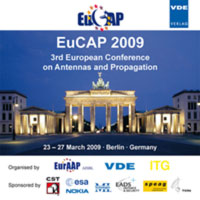Efficient Multi-Aspect RCS Simulations Based on the Shooting and Bouncing Rays Technique
Konferenz: EuCAP 2009 - 3rd European Conference on Antennas and Propagation
23.03.2009 - 27.03.2009 in Berlin, Germany
Tagungsband: EuCAP 2009
Seiten: 5Sprache: EnglischTyp: PDF
Persönliche VDE-Mitglieder erhalten auf diesen Artikel 10% Rabatt
Autoren:
Buddendick, Hermann (Institute of Radio Frequency Technology, Universität Stuttgart, Pfaffenwaldring 47, 70569 Stuttgart, Germany)
Eibert, Thomas F. (Lehrstuhl für Hochfrequenztechnik, Technische Universität München, Arcisstr. 21, 80333 München, Germany)
Inhalt:
This paper presents an approach to simulate the monostatic scattering properties of realistic objects in form of their Radar Cross Section (RCS) in the high frequency regime using the well known Shooting and Bouncing Rays technique (SBR) in a very efficient way. It is based on the monostatic bistatic equivalence principle and can be applied well in scenarios where a considerably large number of neighboring aspect angles is of interest (e.g. turn-table scenario). The main idea is to use additional bistatic information for the different required monostatic aspect angles. In many cases, this information can be obtained cheaply during the SBR process and it can be favorably exploited under certain conditions, mainly that the bistatic sector for which the information is collected around the aspect angle is small and the object is rather smooth. The basic principle of the algorithm is presented using the simple example of a faceted sphere, but the proposed approach also works well for typical passenger cars or airplanes using bistatic information in an angular range in the order of a few degrees. The applicability of the presented approach for realistic objects of interest is demonstrated by calculating the monostatic RCS of an aircraft model. A reduction of computational effort by a factor of approximately 38 has been achieved in this case.


